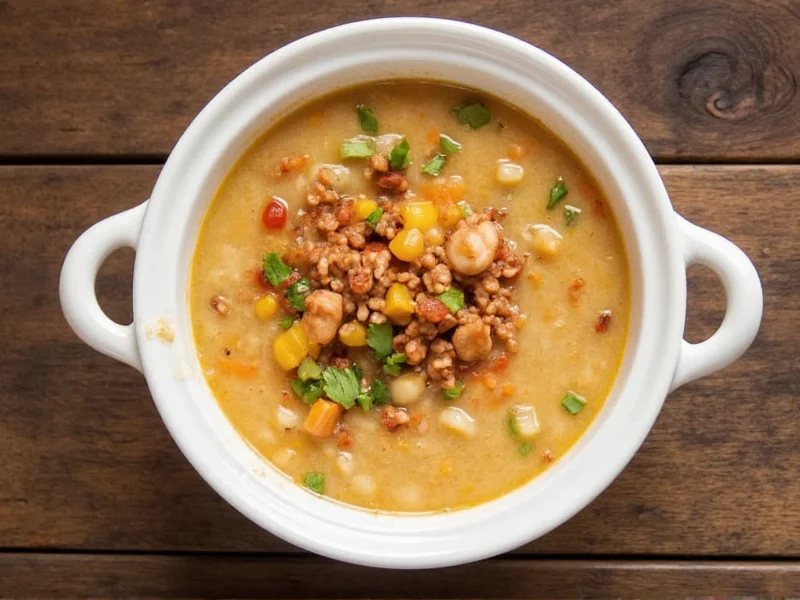Understanding Soup Crock Fundamentals
Soup crocks represent one of the most practical innovations in food service history. These specialized vessels emerged during the late 19th century when restaurants sought solutions for keeping soups hot at the table. The distinctive design—thick walls, wide rims, and substantial weight—creates superior thermal properties compared to standard ceramic bowls. Professional chefs prefer soup crocks for maintaining optimal serving temperatures without requiring constant reheating, which preserves both flavor integrity and dining experience.
Material Composition and Performance
The material used in soup crocks directly impacts their functionality and durability. While various options exist, each material offers distinct advantages for specific applications. Understanding these differences helps both home cooks and restaurant owners make informed decisions based on their particular needs.
| Material Type | Heat Retention | Oven Safety | Dishwasher Safety | Best For |
|---|---|---|---|---|
| Traditional Stoneware | ★★★★★ | Up to 500°F | Limited cycles | Restaurant service, oven-to-table presentation |
| Vitrified Ceramic | ★★★★☆ | Up to 350°F | Full safety | Daily home use, frequent dishwasher cleaning |
| Porcelain | ★★★☆☆ | Up to 400°F | Full safety | Elegant presentations, formal dining |
| Flameproof Earthenware | ★★★★★ | Up to 550°F | Hand wash only | Direct stove-to-table cooking, rustic presentations |
Key Features of High-Quality Soup Crock Designs
Professional-grade soup crocks incorporate several critical design elements that distinguish them from ordinary bowls. The most important feature remains the wall thickness—typically between 3/8 to 1/2 inch—which creates the thermal mass necessary for extended heat retention. This thickness prevents rapid cooling that occurs with standard dinnerware.
Another essential characteristic involves the rim design. Quality soup crocks feature a rolled or beaded rim that serves multiple purposes: it reinforces structural integrity, provides a comfortable grip point when the vessel is hot, and creates a natural barrier against spills. Many professional models also incorporate subtle interior ridges that help distribute heat evenly throughout the contents.
The base construction deserves special attention when selecting soup crocks. Premium models feature a slightly concave bottom that improves stability on table surfaces while also creating a small air pocket that further insulates the contents from the table temperature. This seemingly minor detail significantly extends the period during which soups maintain optimal serving temperatures.
Practical Applications Beyond Soup Service
While designed specifically for soups, modern culinary professionals have discovered numerous additional applications for quality soup crocks. Their heat retention properties make them ideal vessels for individual pot pies, baked eggs, and even certain dessert preparations like bread pudding. The oven-to-table capability eliminates the need for multiple serving dishes, streamlining both preparation and presentation.
Many chefs utilize soup crocks for tableside cooking techniques, particularly with dishes requiring final preparation in front of guests. The thermal stability of quality crocks allows for dramatic presentations like sizzling steak toppings or bubbling cheese finishes without risking vessel failure. This versatility explains why professional kitchens maintain extensive collections of soup crocks beyond their original intended purpose.
Maintenance Protocols for Longevity
Proper care significantly extends the functional life of quality soup crocks. Temperature shock represents the primary threat to these vessels, particularly with stoneware and earthenware varieties. Always follow the "two-temperature rule": never expose soup crocks to temperature changes exceeding 200°F within a five-minute period. This means avoiding direct transitions from freezer to oven or refrigerator to microwave.
Cleaning requires special attention to preserve both appearance and structural integrity. Hand washing with non-abrasive cleaners remains preferable, especially for pieces with decorative glazes. When using dishwashers, position crocks securely to prevent bumping during cycles, and avoid overcrowding that might cause thermal stress from neighboring items. For stubborn residues, soak in warm water with mild detergent rather than using abrasive scrubbers that can damage the glaze surface.
Identifying Authentic Restaurant-Grade Soup Crock Features
When selecting soup crocks for serious culinary applications, certain markers indicate professional-grade quality. Look for manufacturer stamps on the bottom that specify maximum temperature ratings—true oven-safe crocks will indicate at least 500°F tolerance. The weight provides another reliable indicator; quality soup crocks feel substantial in hand due to their thick construction.
Examine the glaze coverage carefully. Professional-grade pieces feature complete interior and exterior glazing that extends to the very edge of the foot. This complete coverage prevents moisture absorption that could lead to cracking during temperature changes. The sound test offers a quick quality check—gently tap the rim with a fingernail; quality crocks produce a clear, sustained ring rather than a dull thud.
Common Misconceptions About Soup Crock Functionality
Several persistent myths surround soup crock capabilities. Many believe all ceramic vessels labeled as "soup bowls" qualify as true soup crocks, but this represents a significant misunderstanding. True soup crocks undergo specific manufacturing processes that create the necessary thermal properties, while ordinary ceramic bowls lack these critical features.
Another widespread misconception involves microwave safety. While some modern soup crocks work in microwaves, traditional stoneware varieties often contain microscopic air pockets that can cause dangerous steam buildup. Always verify manufacturer specifications before attempting microwave use with any soup crock.











 浙公网安备
33010002000092号
浙公网安备
33010002000092号 浙B2-20120091-4
浙B2-20120091-4